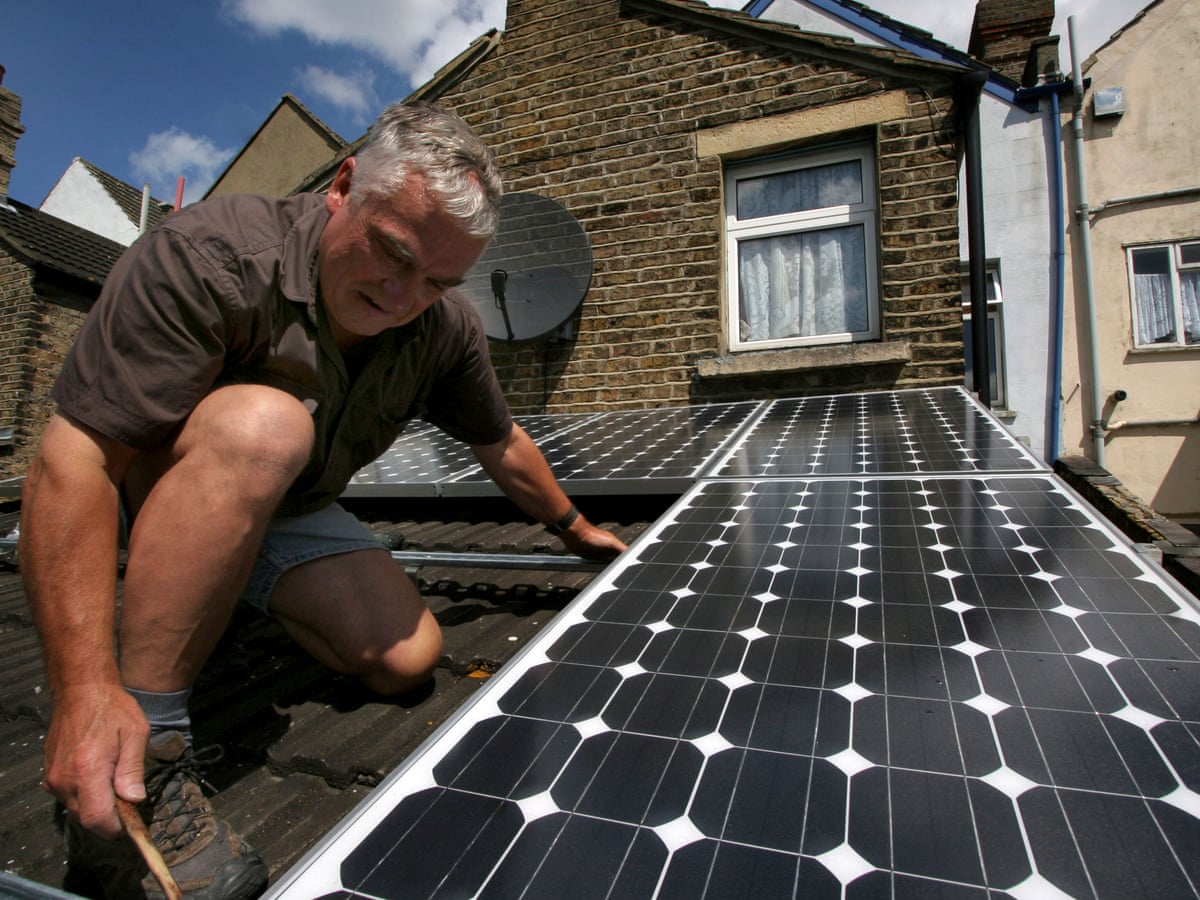Solar energy is a rapidly growing industry, with more and more homeowners looking to install solar panels to reduce their energy bills and environmental impact. However, one question that often arises is how far away solar panels should be from houses. This is an important consideration as solar panels require a certain amount of space and positioning to capture sunlight effectively. Additionally, homeowners may be concerned about potential shading or damage to their property. In this article, we’ll explore how far away solar panels should be from houses and discuss some of the factors that influence this decision. Whether you’re considering installing solar panels on your property or are simply curious about how solar energy works, read on to learn more.
In general, most solar panels need to be within 30 feet of the house in order to generate enough power to offset energy costs.
Solar panels are a great way to save money on your energy bill, but did you know that they can also be used to generate electricity for your home? That’s right, solar panels can be used to power your home in addition to reducing your energy costs. But how far away from your house can they be?
The answer may surprise you. Solar panels can actually be installed quite a distance from your house and still generate enough electricity to power your home. In fact, there are even companies that specialize in installing solar panels on roofs that are far away from the main dwelling.
So, if you’re considering solar panels for your home, don’t worry about how far away they’ll be from your house – they can still do the job!

Credit: www.theguardian.com
How Long Can a Solar Panel Cable Be?
Solar panel cables can be up to 100 feet long. The maximum length of a solar panel cable is determined by the voltage rating of the wire. The higher the voltage, the shorter the maximum length of the wire.
How Far Can You Run 10 Gauge Solar Wire?
You can run 10 gauge solar wire up to 100 feet without any issues. Beyond that, you may start to experience voltage drop which can affect the performance of your system.
How Far Can Solar Controller Be from Battery?
As with any electrical connection, there is resistance in the wires that connect the solar controller to the battery. This resistance causes a voltage drop between the solar controller and the battery, which reduces the amount of power that can be delivered by the solar controller. The further the solar controller is from the battery, the greater this voltage drop will be, and therefore less power will be delivered to the battery.
In order for a solar controller to work effectively, it should be as close to the battery as possible.
Is It Harder to Sell a House With Solar Panels?
No, it’s not harder to sell a house with solar panels. In fact, many homeowners believe that having solar panels can actually increase the value of their home and make it more attractive to potential buyers. Solar panels are becoming increasingly popular in the United States as more and more people are looking for ways to save money on their energy bills and be more environmentally friendly.
If you’re thinking about selling your home in the near future, installing solar panels may make it easier to find a buyer who is willing to pay a higher price.
Setting Up Solar Panels Far From Home – 550 Ft!! – Part Two | Better than 100% Efficiency?
Maximum Cable Length for Solar Panel
As the name suggests, maximum cable length is the longest distance that a solar panel can be from the batteries or other storage devices in your system. The main reason to have this limit is because of voltage drop.
Voltage drop is caused by the resistance in the wire.
The longer the wire, the more resistance and therefore, more voltage drop. If you exceed the maximum cable length, you will not be able to get enough power from your solar panel to charge your batteries or run your appliances.
So what is the maximum cable length for solar panel?
It depends on a few factors including:
-The type of wire you are using (copper is best)
-The gauge of wire (thicker wire has less resistance)
-The distance between your solar panel and batteries/storage (the shorter the better)
-The amount of power your system needs (a higher wattage system will require thicker wire)
Assuming you are using standard 12 volt DC systems with copper wiring, here are some suggested maximums:
-For systems up to 400 watts, use 14 gauge wire and keep runs under 50 feet
-For systems 400 watts to 1 kilowatt, use 12 gauge wire and keep runs under 100 feet
Solar Power Loss Over Distance
As the sun’s energy travels through the atmosphere to reach Earth, it encounters particles that can scatter and absorb its light. This scattering and absorption cause solar power loss over distance. The amount of power lost depends on the type of atmosphere, the angle at which the sunlight hits the atmosphere, and how far the sunlight has traveled.
The Earth’s atmosphere is mostly nitrogen and oxygen, which don’t scatter sunlight very much. However, there are also water vapor and carbon dioxide molecules in the air that can scatter sunlight. At sunset, when the sun is low in the sky, its light must travel through more of Earth’s atmosphere to reach us than at noon when the sun is directly overhead.
So we see more scattered sunlight at sunset than at noon. And because water vapor and carbon dioxide molecules are more common in cold air near Earth’s surface than in warm air higher up, we see even more scattered sunlight in winter than in summer.
All this scattering causes solar power loss over distance—but not a lot.
In fact, less than 1% of the sun’s energy is scattered or absorbed by Earth’s atmosphere on its way to ground-based solar panels.
Safe Distance from Solar Inverter
Solar inverters are devices that convert the DC power generated by solar panels into AC power that can be used by appliances and equipment. They are an essential component of any solar energy system.
When choosing a location for your solar inverter, it is important to consider its safe distance from other electrical equipment and sources of ignition.
The National Electric Code (NEC) requires that inverters be installed at least 20 feet from other electrical equipment and at least 10 feet from any source of ignition, such as a furnace or water heater.
In addition to following the NEC requirements, it is also important to consult with your local building code officials to ensure that your installation meets all safety regulations.
Solar Panel on Side of House
Solar panels are a great way to save money on your energy bill, and they’re also good for the environment. If you’re thinking of installing solar panels on your home, there are a few things you should know first.
One of the most important things to consider is where you’re going to put them.
Solar panels need to be in a sunny spot in order to work well, so if your house doesn’t get much sun, it might not be the best location for them. Another thing to keep in mind is that solar panels can be heavy, so you’ll need to make sure your roof can support their weight.
Once you’ve decided where to put your solar panels, the next step is choosing the right type for your needs.
There are two main types of solar panels: monocrystalline and polycrystalline. Monocrystalline panels are more efficient but also more expensive. Polycrystalline panels are less efficient but cheaper, so they might be a better option if you’re on a budget.
Installing solar panels is a big investment, but it can definitely pay off in the long run. Not only will you save money on your energy bills, but you’ll also be doing your part to help the environment!
Conclusion
The most important factor in determining how far away solar panels can be from a house is the amount of sunlight that the panels will receive. If the solar panels are too far away from the house, they will not receive enough sunlight to generate electricity. The distance that solar panels can be from a house also depends on the type of solar panel system that is being used.



